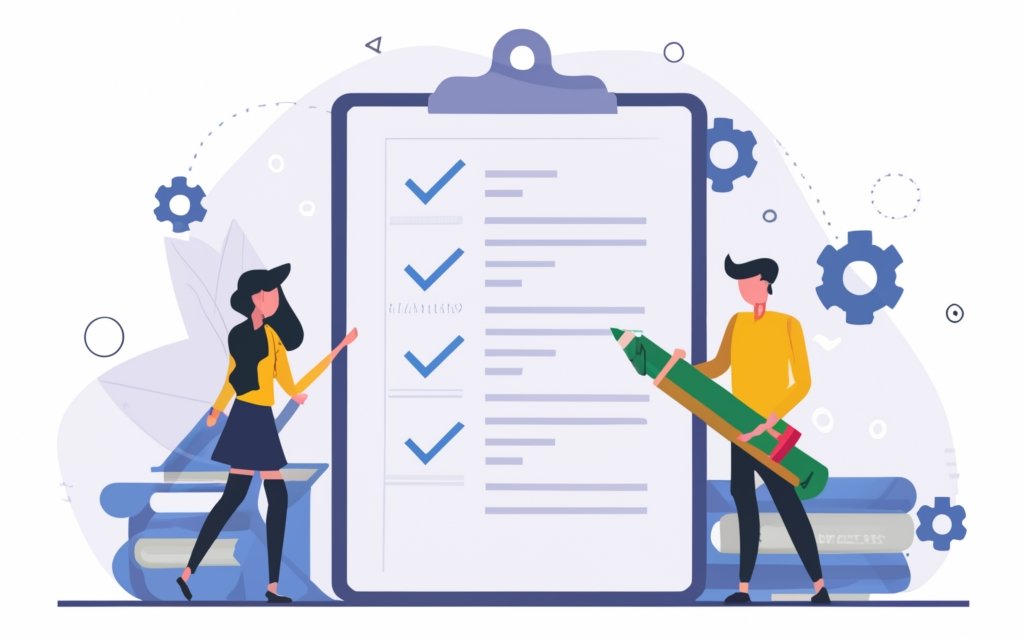
Have you been preparing for the CompTIA A+ certification exam? Do you want to evaluate your readiness through a realistic practice test? This article provides a comprehensive, step-by-step walkthrough of a full-length CompTIA A+ practice test with detailed explanations for each question. Read on to understand the exam structure better and learn effective test-taking strategies.
Why is CompTIA A+ Certification Valuable?
The CompTIA A+ certification validates the core skills and knowledge required for a career in IT support and technical troubleshooting. It covers areas like hardware, software, mobile devices, networking, security, and troubleshooting.
CompTIA A+ certified professionals can find lucrative job opportunities in roles like IT support specialists, help desk technicians, desktop support analysts, and technical support engineers. The certification demonstrates mastery of critical IT skills and boosts confidence in handling tech issues professionally.
CompTIA A+ Exam Structure
The CompTIA A+ certification has two required exams:
- CompTIA A+ 220-1001 (Core 1): Focuses on PC hardware, networking, mobile devices, and hardware & network troubleshooting
- CompTIA A+ 220-1002 (Core 2): Covers installing & configuring operating systems, expanded security, software troubleshooting, and operational procedures
Table 1: CompTIA A+ Exams Overview
| CompTIA A+ 220-1001 | CompTIA A+ 220-1002 | |
|---|---|---|
| Exam Length | 90 minutes | 90 minutes |
| Number of Questions | Maximum of 90 questions | Maximum of 90 questions |
| Question Types | Multiple choice & performance-based | Multiple choice & performance-based |
| Passing Score | 675 (on a scale of 100–900) | 700 (on a scale of 100–900) |
Now that you understand the test structure let’s walk through a practice exam!
CompTIA A+ Practice Test Overview
This practice test for CompTIA A+ 220-1001 Core 1 exam contains 80 multiple-choice questions that must be completed within 90 minutes. It incorporates all the CompTIA A+ exam domains like hardware, networking, mobile devices, IT fundamentals, and troubleshooting.
You will get detailed explanations for each question highlighting the correct response and reasoning behind it. This will help reinforce your knowledge and identify areas needing further practice.
So let’s get started!
Hardware
1. You are upgrading RAM in a laptop but notice only one slot is available. What RAM technology is being used here?
- A) DIMM
- B) SODIMM
- C) SIMM
- D) VRAM
Explanation:
Laptops use Small Outline Dual In-line Memory Modules (SODIMMs) that are physically smaller than desktop DIMMs to fit the compact hardware. SIMMs and VRAM are outdated legacy RAM types. So B is correct.
2. Which port uses a 15-pin connector and supports analog video output?
- A) DVI
- B) VGA
- C) HDMI
- D) DisplayPort
Explanation:
VGA (Video Graphics Array) uses a 15-pin DE-15 connector and can transmit analog component RGB video signals. So B is the right choice.
Networking
3. Which wired connectivity standard provides speeds up to 2.5 Gbps using existing CAT5e cabling?
- A) 802.11ac
- B) 802.11ax
- C) 802.3bz
- D) 802.11ay
Explanation:
802.3bz defines 2.5GBASE-T and 5GBASE-T Ethernet standards that enable multi-gigabit speeds over legacy CAT5e cabling. A, B, and D describe wireless protocols. Hence C is correct.
4. Which network troubleshooting tool pings multiple hops to trace the path packets take to reach a destination?
- A) ipconfig
- B) tracert
- C) nslookup
- D) netstat
Explanation:
tracert (traceroute) sends ICMP echo requests and records route hops between the source and destination. So B is the answer.
Mobile Devices
5. Which mobile device authentication method uses your unique physical characteristics?
- A) Password
- B) PIN
- C) Biometrics
- D) Pattern
Explanation:
Biometrics like fingerprints, iris/face recognition, and voice matching authenticate users based on their unique physical traits. So C is the right response.
6. Which protocol helps locate tags and stickers attached to objects using radio waves?
- A) NFC
- B) RFID
- C) Bluetooth
- D) ANT
Explanation:
RFID (Radio Frequency Identification) uses electromagnetic fields to read/write data to tags & stickers for tracking objects. Choice B is correct.
Troubleshooting
7. A user cannot print documents from their laptop connected to a wireless office network. What should you check FIRST?
- A) Default printer
- B) Network connectivity
- C) Printer drivers
- D) Spooler service
Explanation:
Since this issue occurs over Wi-Fi, the network connectivity should be verified first before investigating other print-related problems. So B is the right pick.
8. An end user reports their laptop runs extremely slow when multiple applications are open. What would be the BEST solution?
- A) Increase RAM
- B) Add a Solid State Drive (SSD)
- C) Replace the CPU
- D) Upgrade the graphics card
Explanation:
Adding an SSD will drastically improve read/write speeds and system responsiveness compared to traditional HDDs when multitasking. So choice B is correct.
IT Fundamentals
9. You need to securely erase all data from old hard drives before disposing them. Which method overwrites drive sectors with binary zeros?
- A) Degaussing
- B) Shredding
- C) Sanitizing
- D) Purging
Explanation:
Sanitizing (or clearing) overwrites all addressable locations with zeros to prevent data recovery. Choices A, B and D refer to other drive disposal techniques. Hence C is the answer.
10. Which cloud computing deployment model uses shared public infrastructure resources?
- A) Public Cloud
- B) Private Cloud
- C) Hybrid Cloud
- D) Community Cloud
Explanation:
A Public Cloud platform utilizes shared computing resources available online to the general public. So A is correct.
Key Takeaways from the CompTIA A+ Practice Test
Now that you’ve completed the sample questions, let’s discuss some key takeaways:
- Carefully read each question before glancing at the answers
- Eliminate options you know to be incorrect first
- Watch out for technical terms that closely resemble each other
- Don’t overthink questions and trust your initial gut feeling
- Manage your time by limiting 1-1.5 minutes per question
- Skip tricky questions and return to them later
- Use process of elimination for multiple-choice questions
- Avoid guesswork for performance-based questions; use troubleshooting skills instead
Getting familiar with these test-taking methods and practicing regularly will help boost your confidence.
Common Mistakes to Avoid in CompTIA A+ Exam
Many test-takers struggle with the CompTIA A+ exams because they repeat some common yet avoidable mistakes. Being aware of these errors will help you sidestep them in your prep process:
Failing to Understand Questions Fully
- Skimming through the questions instead of reading them thoroughly
- Missing key details about the problem described
Losing Focus Due to Nervousness
- Feeling overwhelmed and panicking during the exam
- Struggling to concentrate and retain information
Ineffective Time Management
- Spending too much time pondering single complex questions
- Running out of time before attempting all questions
Guessing Answers Due to Lack of Preparation
- Taking blind guesses instead of applying logic
- Choosing responses intuitively without reasoning
Avoiding these pitfalls requires diligent practice with mock tests. Tracking your errors and working on those areas will lead to success.
Are Practice Tests Important for CompTIA A+ Exam Prep?
Practice exams play a pivotal role in preparing for the CompTIA A+ certification tests. Here are some key benefits:
Evaluating Your Knowledge Gaps
- Identify topics and domains needing more attention
- Focus your study plan on specific weak areas
Getting Familiar with the Real Exam Format
- Experience actual exam conditions before the big day
- Understand the question styles and time limits
Retaining Information Effectively
- Reinforce knowledge through active recall testing
- Improve memory and retention of key concepts
Monitoring Your Progress
- Gauge your exam readiness based on mock test scores
- Fine-tune your preparation strategy closer to the exam
Based on your current knowledge levels, you should take full-length practice tests at least 2-3 times during your study plan. Use the errors from initial attempts to drive further learning.
Additional Resources for CompTIA A+ Exam Prep
Supplement self-study for the CompTIA A+ exam with these helpful resources:
Books:
- CompTIA A+ Certification All-in-One Exam Guide Tenth Edition by Mike Meyers
- CompTIA A+ Complete Practice Tests: Exam Core 1 220-1001 and Exam Core 2 220-1002 by Jeff T. Parker
Online Courses:
- LinkedIn Learning CompTIA A+ Certification Courses
- Udemy CompTIA A+ Video Course by Mike Meyers
CompTIA A+ Practice Test Resources:
- ExamCompass CompTIA A+ Practice Exams
- CrucialExams.com CompTIA A+ Test Preparation
YouTube Channels:
- Professor Messer CompTIA A+ Training Videos
- Total Seminars Channel Mike Meyers CompTIA A+ Videos
Use these along with the CompTIA A+ exam objectives to ensure complete coverage of all domains.
Conclusion: Why Passing the CompTIA A+ Exam Matters
Earning the CompTIA A+ certification validates your expertise in core IT support skills. It opens doors to lucrative job opportunities and builds foundations for advanced IT certifications. By mastering the exam content and following proven preparation strategies highlighted here, you can pass the tests successfully.
Stay motivated during your prep process by practicing with our walkthrough of the sample questions. Learn from your mistakes, reinforce weak areas through revision, and keep forging ahead. You got this!
With consistent efforts and commitment, you will not only pass the exams but also build real-world skills to thrive in an IT support career. Best of luck!


